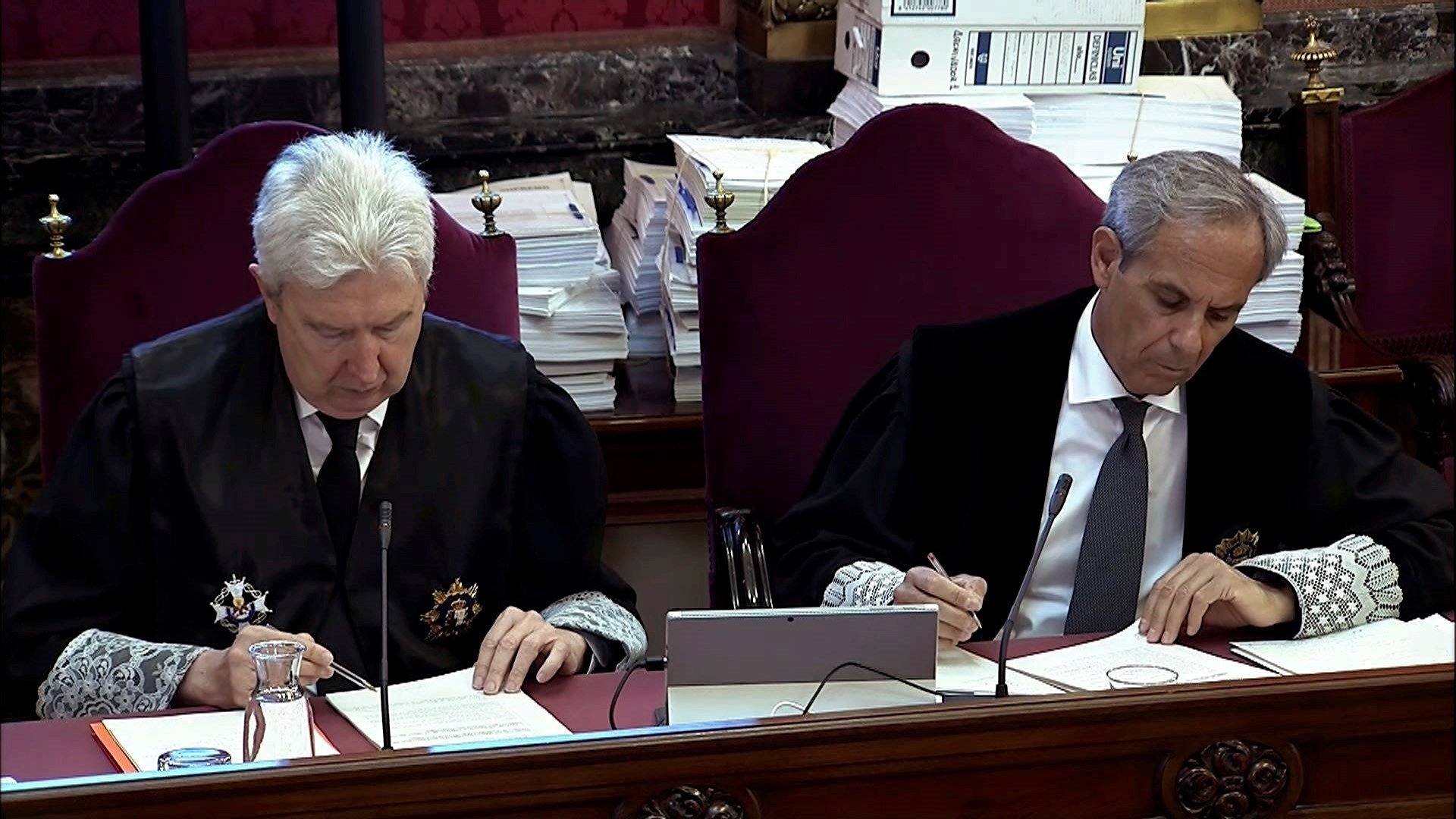Following the ban on displaying videos or images to support or contrast with witness testimony earlier in the Catalan independence trial, the long-awaited evidence phase is finally here. And it's off to a stumbling start. Public prosecutors have gone first, showing a serious lack of preparation with Jaime Moreno saying he was "unable" to say where various videos he offered as evidence were recorded, despite repeated requests from defence counsel. Not only that, Moreno made mistakes some of the times he was asked which date the images were recorded, as they were shown with no apparent chronological or geographical logic, and some of them were repeated.
"I'd love to be able to say that it's a specific place, but I'm unable to know that exactly", replied Moreno when Ana Bernaola, from the defence team for Jordi Sànchez, Josep Rull and Jordi Turull, asked about one video. The presiding judge, Manuel Marchena, noted the prosecutor's response and the defence's protest, but the video was still shown, as with all the others that Moreno couldn't give the context for.
Bernaola then asked that, even if prosecutors couldn't say where they were filmed, they should at least provide the date of recording, given that the videos were being displayed in a mixed order.
"General atmosphere"
In response, the prosecution protested that they were being "asked for an identification which is going to add nothing with respect to what the defences know". He was able to say, however, that the previous video shown was "at the CUP", referring to the political party's headquarters, and the video paused during their discussion showed "Hotel Avenida, a protest at the place where the police are staying". He added that their aim wasn't to discuss what had happened in each specific location, but to give an idea of the "atmosphere at all the polling stations and in all places".
At that point, Marchena warned the prosecutor about avoiding evaluation. For his part, defence lawyer Jordi Pina insisted on the "special importance" of being able to precisely identify video to be able to compare them with earlier witness testimony, to be saved for the party's final reports being disallowed by the court during this phase. "It's not a whim of the defence," he said.
The judge's response was that there was "no obstacle" being presented by the court to the request, that instead "the problem [...] is that there are times when this information isn't available [to the prosecution]". The prosecution were then allowed to continue showing their videos.
As it happens, some of the times the prosecution offered details about the videos, they got them wrong. One video, for example, showing the blocking of high-speed AVE rail lines at Barcelona-Sants station, was from 8th November 2017, not 3rd October as Moreno said. The judge also had to stop the projection of videos that had been included twice by prosecutors in the list of files they had to show.
Other than the repeated videos, however, the court allowed prosecutors to show all the videos they had proposed, apart from one which included a panel discussion from a TV program. Marchena also ordered some of the videos to be muted when journalist commentary could be heard.

